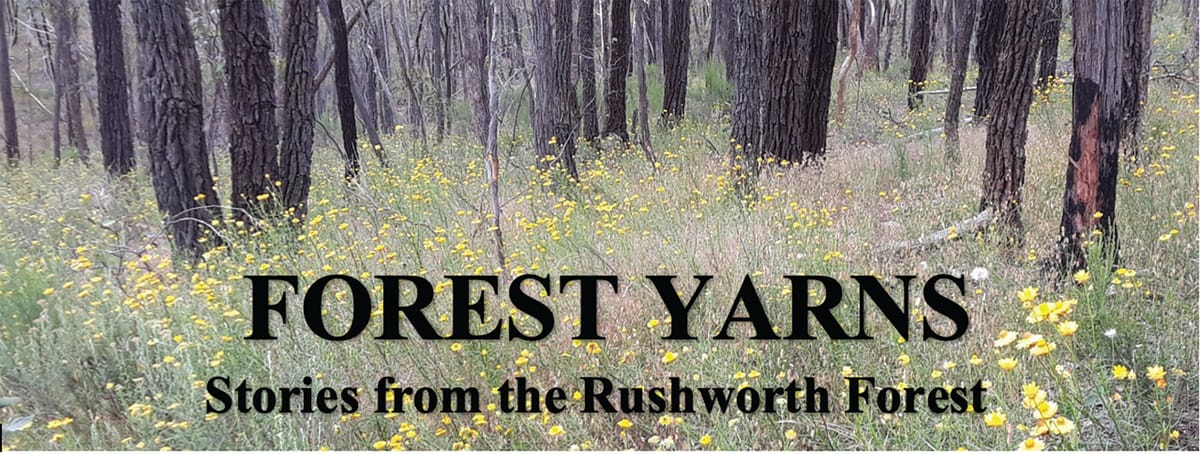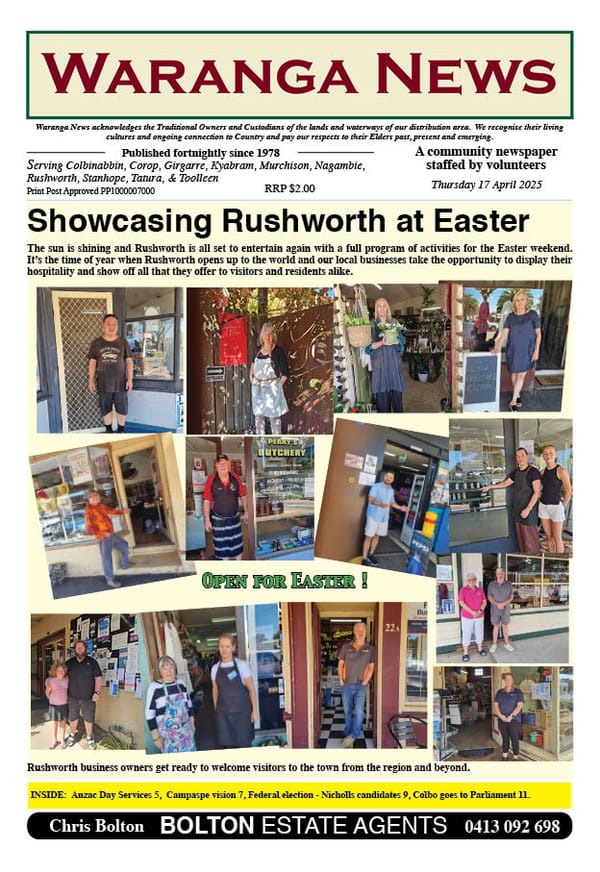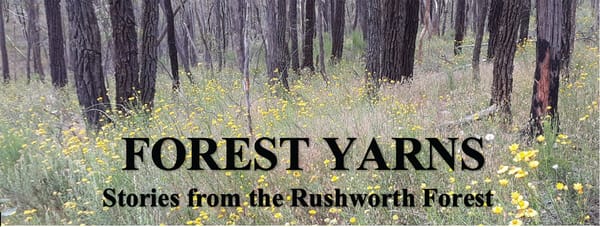Forest Yarns No 1
Introduction

Introduction
This new series of historical articles is about the Rushworth Forest. The box-ironbark forest is inextricably linked to the town of Rushworth and former towns like Whroo, Bailieston and Graytown. It is part of who we are and how we see ourselves.
As a kid, my parents would take me and my siblings into the forest where our imaginations would be fired by past events, especially the gold rush. It was the start of a personal obsession with the history of the district.
We, in turn, organised our parents’ 40th wedding anniversary in 1984 to be celebrated in the bush at Whroo, suggesting tongue-in-cheek that it might generate as much excitement in Whroo as the royal wedding of the Prince of Wales and Princess Alexandra of Denmark did in 1863, when large celebrations took place.
On separate trips in the 1960s, Dad would take me to Risstrom’s sawmill for a trailer loads of firewood. In those days, the mill was steam-powered. The sights, smells and sounds of the mill resonated with mental images of earlier days.
The late Ron Risstrom and Dad had a connection in that they served on the GV Football League tribunal together, where they both had highly developed bulls#*t detectors. Good luck to any footballer who tried to fabricate or embellish a story to try to get off a charge with those two on the panel.
Content
Forest Yarns will try to collect and publish all manner of stories and pictures connected with the local bush. This might include stories from people who had a connection to the bush - Aboriginal people, gold diggers, forest workers and others who made or make a living from the bush, recreational users and travellers through the bush. It will also cover stories about the amazing flora and fauna of the box ironbark forest and how some of that flora and fauna has been utilised, particularly over the past 170 years.
In 2005, Ron Risstrom was reported as saying “Rushworth had its 150th anniversary here a couple of years ago and I always quote that Rushworth has been involved in three separate eras: for the first 50 years it was gold, in the next 50 it was the timber industry, and that (in the) last 50 it’s been all sorts of things…”1 That statement will provide a large amount of the focus on the stories.
What the stories will not try to do is provide a comprehensive story of the history of the forest in some sort of chronological order. There are many other publications that attempt to do all or part of this, some of which will be quoted in this series.
Also, the stories will not venture into debate about the validity of the past, present, or possible future uses of the forest. It is much more about collecting past stories and pictures about a place that is part of the dreaming of many local people.
Contributions
It would be wonderful to have input from people who have, or have had, a connection with the forest. Many stories have been handed down orally, so have never been recorded for posterity. This series of stories may provide an opportunity for that to happen to a greater extent.
Any written documents, particularly about family connections to the forest, would be of interest. Additionally, the writer would appreciate copies of photos which might illustrate aspects of the wider story.
It is intended that the stories will run in the Waranga News for as long as there is content available, as well as interest from readers. Eventually the stories will be put into a compilation which may or may not be published. At the very least, like previous series of stories in this paper, it will be made available free of charge as a word document and/or available on appropriate websites like that of the Rushworth Historical & Preservation Society.
If you have stories and/or pictures you would like to share, please contact me via email on [email protected]
Tony Ford
References
1. Lawrence, R and Bellette, M,
Gold, Timber, War and Parks: A History of the Rushworth Forest in Central Victoria
(CSIRO Publishing 2010)










